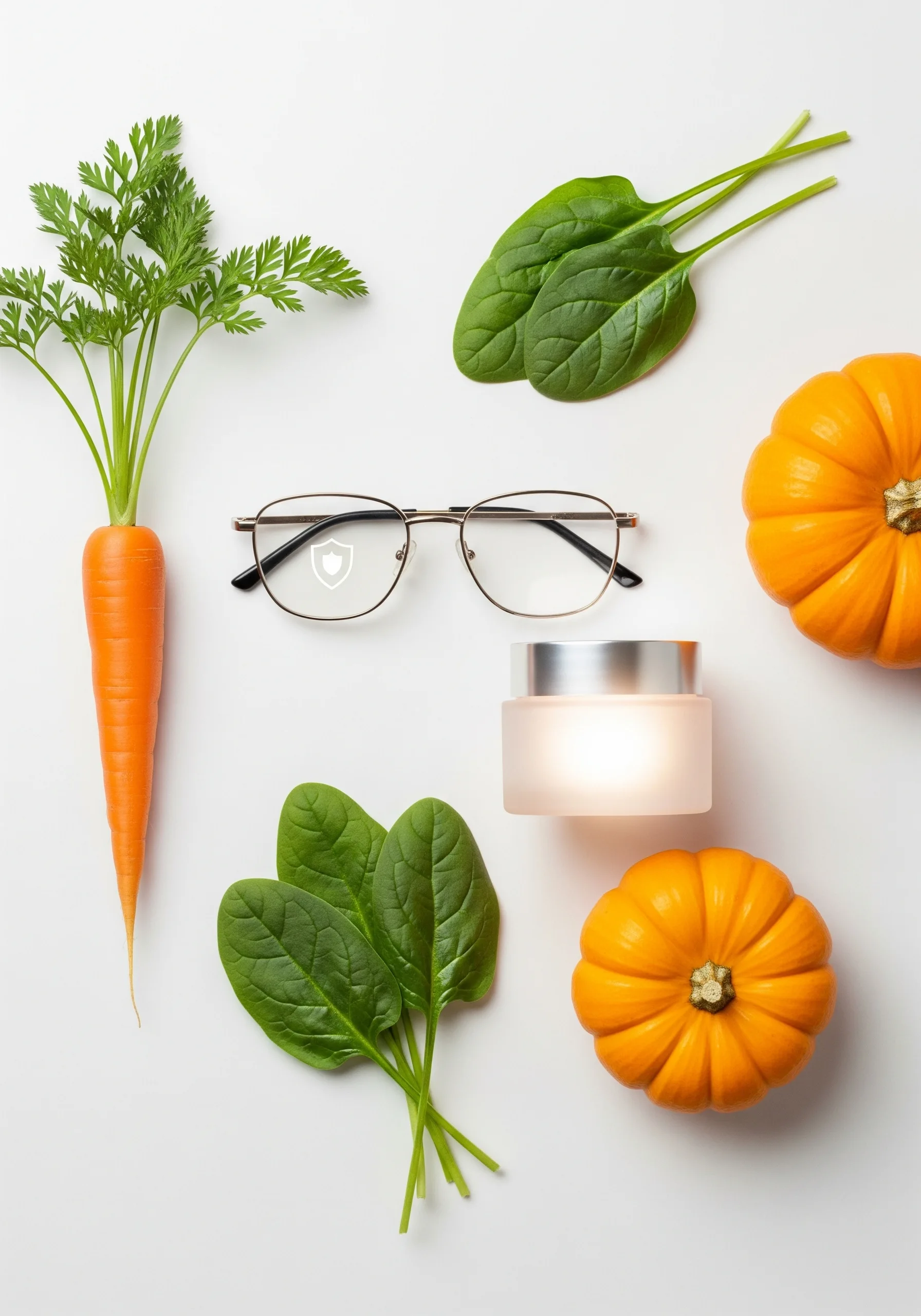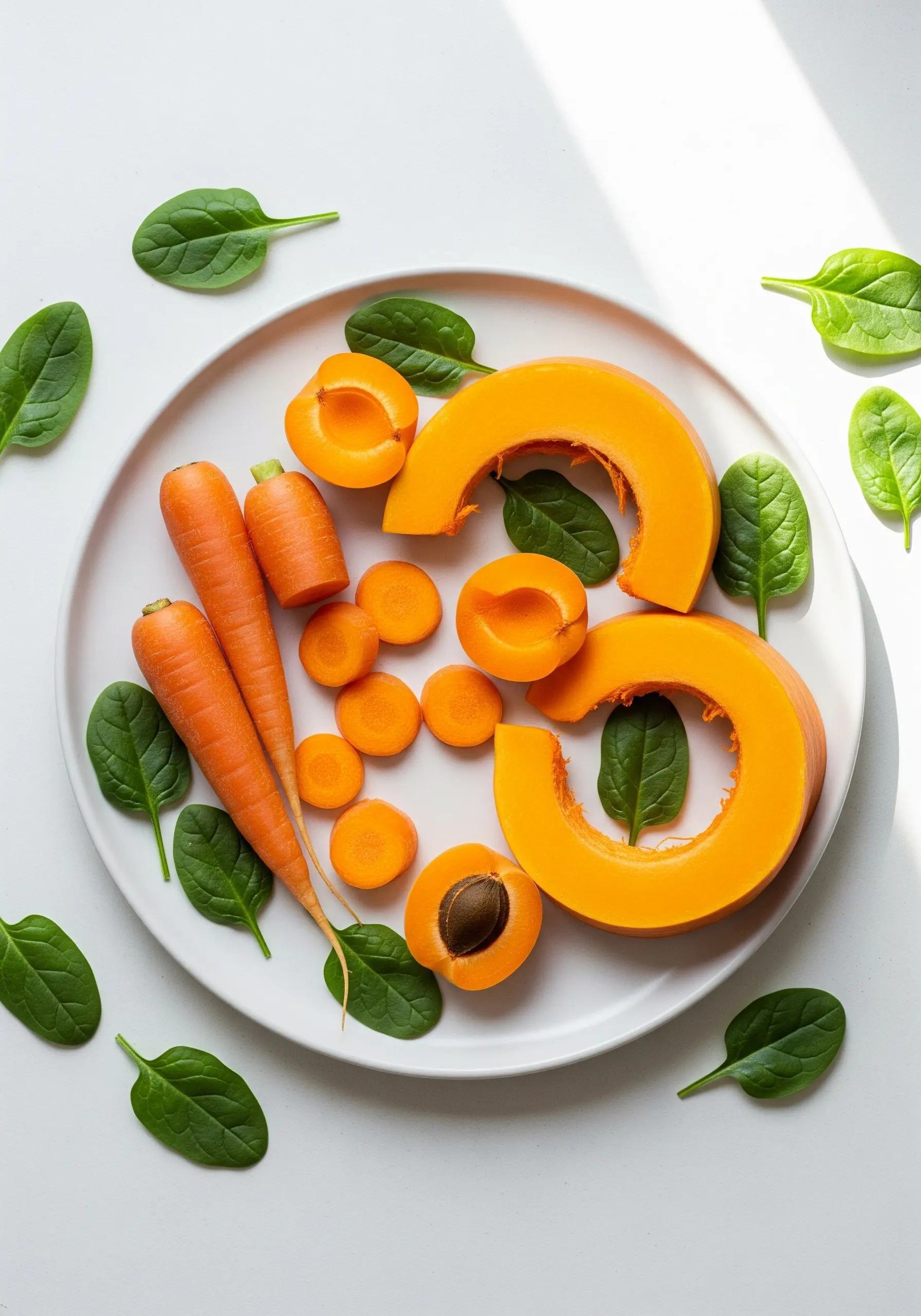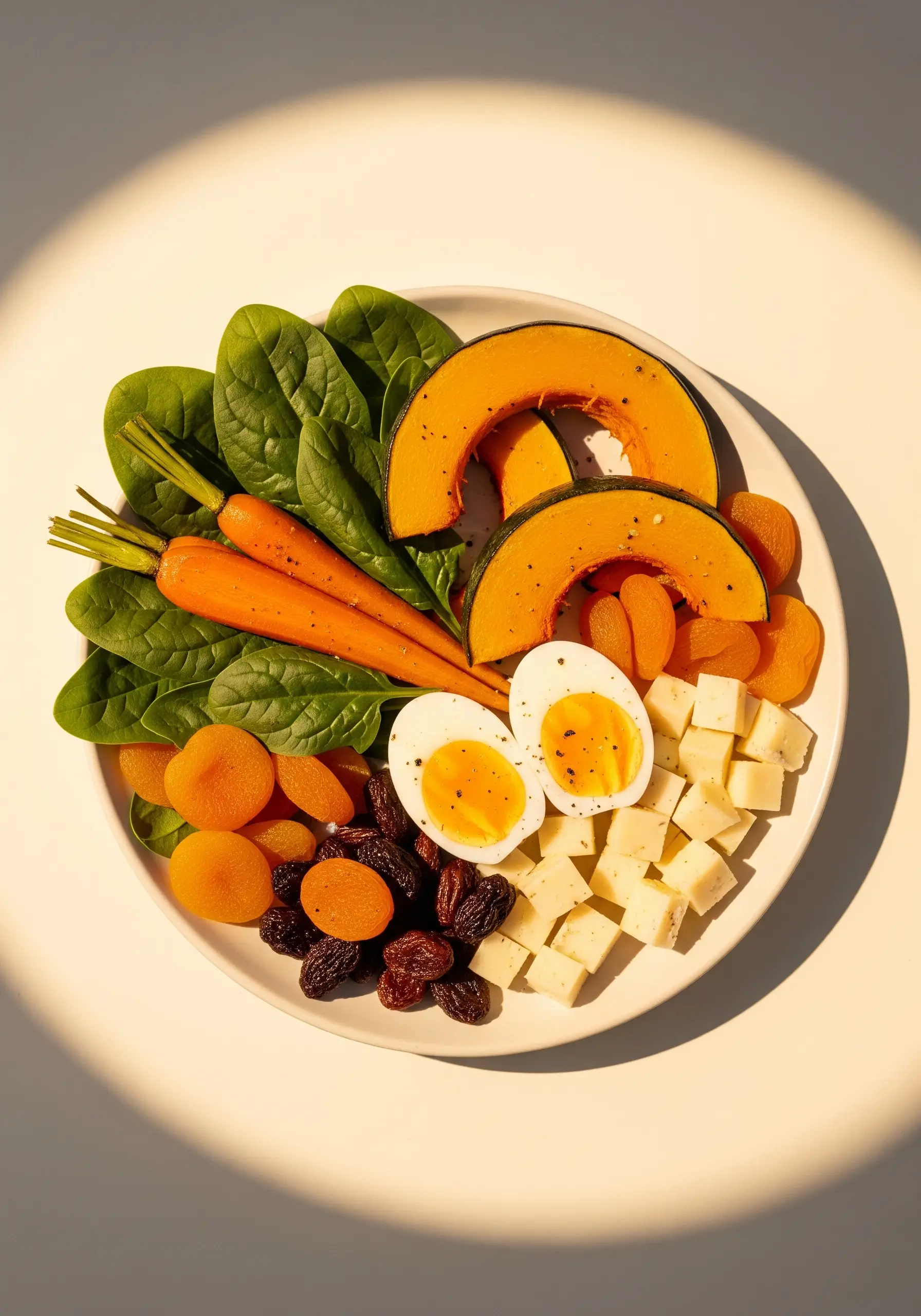

Why is Vitamin A so important?
Vitamin A belongs to the group of fat-soluble vitamins and participates in many biochemical processes, without which the body cannot function properly.
-
Supports normal vision and dark adaptation.
The active form of vitamin A — retinal — is a key component of the visual pigment rhodopsin found in the retina. This allows us to see in low light and quickly adjust our vision in the dark.

-
Protects mucous membranes from infections.
The mucous membranes of the respiratory tract, gastrointestinal tract, and urogenital system require constant renewal of epithelial cells. Vitamin A maintains their integrity, creating a barrier against viruses and bacteria. -
Enhances immune defense.
Vitamin A is necessary for the maturation and function of lymphocytes and macrophages — cells that are the first to fight infections. Its deficiency can lead to frequent colds and slow recovery after illness. -
Helps maintain healthy and elastic skin.
Retinoids stimulate collagen synthesis, accelerate cell renewal, and prevent dryness. This makes vitamin A important not only for health but also for beauty.

Animal sources
Animal products are the best source of ready-to-use retinol, which the body absorbs without additional conversion.
-
Liver — the “gold standard” for retinol content.
100 g of beef liver contains dozens of times the daily requirement of vitamin A. Therefore, even small portions of liver are a true “vitamin concentrate.” -
Eggs 🥚 — retinol + carotenoids.
The yolk contains both retinol and the pigments lutein and zeaxanthin, which additionally protect the eyes. -
Butter — a source of fat-soluble vitamins.
Although modern nutrition advises limiting its intake, butter remains an important natural carrier of retinol. -
Cheese — combination of retinol and calcium.
Dairy products support not only vitamin balance but also the skeletal system, making them especially useful for children and the elderly.

Plant sources (beta-carotene)
Plant foods do not contain ready-made vitamin A but provide the body with provitamin A — beta-carotene, which is converted to retinol in the liver.
-
Carrots 🥕 — a classic example of beta-carotene.
The orange color of carrots is due to their high carotenoid content. For better absorption, they should be consumed with fats (e.g., carrots with olive oil). -
Pumpkin 🎃 — a bright source of carotenoids.
In addition to beta-carotene, pumpkin contains fiber and trace elements, making it beneficial for digestion. -
Spinach 🌱 — rich in carotenoids and antioxidants.
Leafy greens provide not only beta-carotene but also lutein and zeaxanthin, which protect against age-related vision changes. -
Apricots — a combination of taste and benefit.
Dried apricots have an even higher concentration of beta-carotene, making them a convenient “healthy snack.”

Vitamin A deficiency: what to watch for?
Insufficient intake of vitamin A has serious clinical consequences:
-
Dry skin and mucous membranes.
The skin loses elasticity, becomes prone to irritation, and the mucous membranes no longer effectively perform their protective function. -
Night blindness (impaired vision in dim light).
The first sign of deficiency is a reduced ability to see in low light. In severe cases, xerophthalmia and even blindness can develop. -
Weakened immunity and increased susceptibility to infections.
The body becomes less resistant to viruses and bacteria. In children, this manifests as frequent respiratory illnesses; in adults, as prolonged recovery after infections.
According to WHO estimates, vitamin A deficiency is one of the leading causes of preventable childhood blindness worldwide.
Remember
“Add vitamin A-rich foods to your diet — and support your health every day!”
Table: main sources of vitamin A
| Product | Vitamin A form | Approximate content (µg/100 g) |
|---|---|---|
| Beef liver | Retinol | 9000–12000 |
| Chicken egg | Retinol + carotenoids | 140–160 |
| Carrot | Beta-carotene | 8500–9000 |
| Pumpkin | Beta-carotene | 3000–3100 |
| Spinach | Carotenoids | 4500–4700 |
| Apricots | Beta-carotene | 1600–1700 |

Questions & Answers
1. Can you get enough vitamin A from plant foods alone?
Yes, but the effectiveness depends on the body’s ability to convert beta-carotene into retinol. This process is individual and can decrease with a low-fat diet.
2. Is excess vitamin A dangerous?
Yes. Excessive intake of retinol (especially in supplements) can cause toxicity: nausea, headache, liver problems. Plant carotenoids are less risky because their absorption is regulated.
3. Which groups are most prone to vitamin A deficiency?
-
Children in countries with insufficient nutrition
-
People with chronic gastrointestinal diseases that impair fat absorption
-
Individuals with a limited or monotonous diet
4. Are vitamin A supplements necessary?
In most cases, a balanced diet is sufficient. Supplements are prescribed by a doctor in cases of proven deficiency or increased needs (e.g., children, pregnant women, patients with malabsorption).
References
-
World Health Organization. Vitamin A deficiency. WHO Fact Sheet.
-
Sommer A., West K.P. Vitamin A Deficiency: Health, Survival, and Vision. Oxford University Press, 1996.
-
Tanumihardjo S.A. Vitamin A and Carotenoids. Adv Nutr. 2011.
-
National Institutes of Health (NIH). Vitamin A Fact Sheet for Health Professionals.



